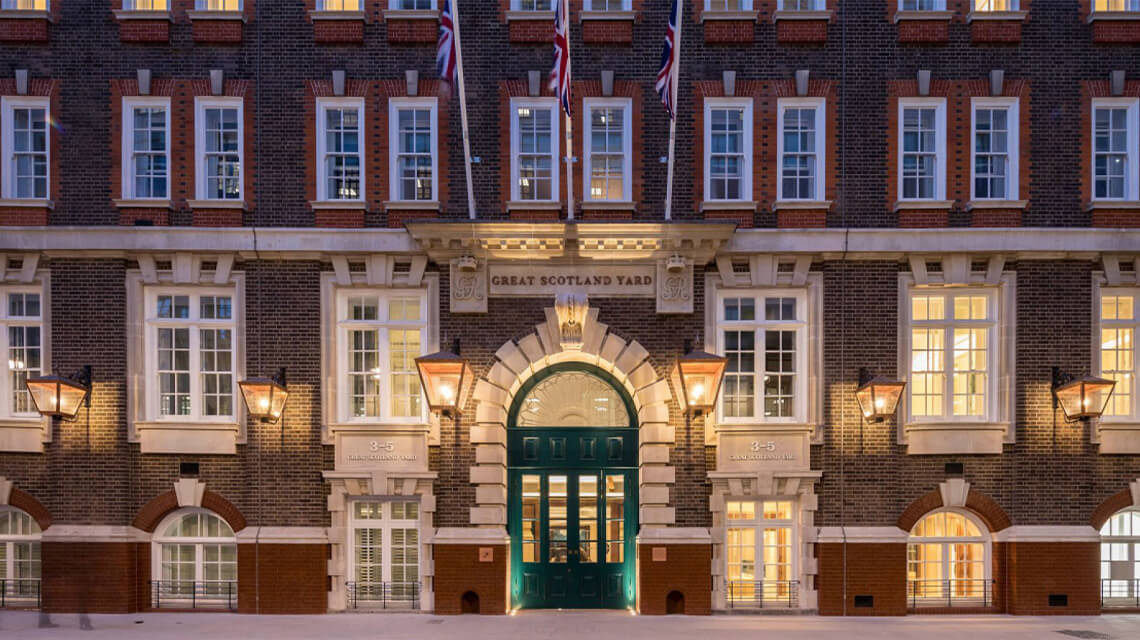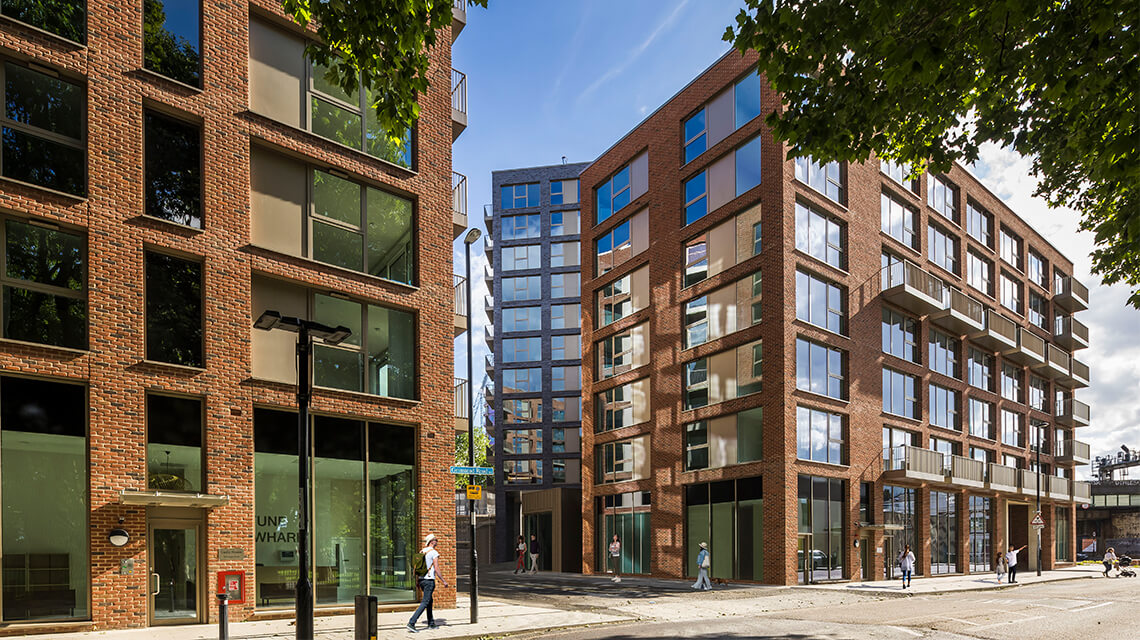London’s leading developer, Galliard Group has completed the 3.5 year construction of the Great Scotland Yard Hotel. This magnificent 93,000 sq ft five-star hotel was once the location for the original Great Scotland Yard Metropolitan Police HQ and later the offices for the Ministry of Defence.
In 2013, Galliard Group acquired a 125 year Crown Estate lease on the building and, in 2016, was exchanged for the forward sale to Abu Dhabi based LuLu Group International for £110 million. Galliard’s construction division has completed the £75 million construction - working with hospitality design firm Hirsch Bedner Associates.
The seven-storey hotel will be launched in late 2019 and will be comprised of 153 bedrooms and 11 suites, and an incredible townhouse suite, part of the original Scotland Yard Police premise. The hotel, which will be operated by Hyatt, will boast interior designs set to include shields, emblems and historic details etched into glass and metalwork to reference the building’s police and military past.
Some key features of the hotel include a grand entrance lounge, concierge, a main cocktail bar and - accessible via a secret door - the whiskey bar and signature restaurant. As well as a 120 seat main conference room, meeting rooms and function rooms the hotel guests will have access to a library and gymnasium.
The Great Scotland Yard Hotel is the latest hotel from Gaillard Group, with 10 hotels built over the last 10 years. The construction, led by CEO Don O Sullivan, has converted this Grade II listed Georgian townhouse and grand Edwardian building into London’s latest hotel. The elegantly restored original Edwardian façade combined with the ultimate luxurious interiors make for an unforgettable experience at the hotel.
Galliard has extended the original five-storey building to two additional levels above the original roof plus two new levels of basement, with a depth of 9 metres - making it one of the largest and most complex basement excavations undertaken in the last decade in Whitehall. The top storey features intricate detailing to match the original grand imperial Red brick and Portland stone façade, to consist of a period-style Westmorland slate clad mansard roof, with handmade slate and ecological features.
Original, restored features include tall windows with feature brick and stone detailing to the main Edwardian building as well as a new Edwardian-style feature clock, gas-style copper lanterns and plant boxes. Each part of the process from construction through to décor has been carefully selected to offer the ultimate specification. Various custom-made materials, fixtures and fittings from locations across the world makes this hotel a top destination showcasing sheer luxury.
Those visiting the hotel will be greeted with high ceilings and a feature chandelier by Precioisa and Italian Crema marbling to the reception foyer in a bespoke marquetry design. The walls are lined in walnut paneling, antique bronze mirror work and bespoke joinery to keep in line with the building’s heritage. Other key features will include crystal glass sculptures and chandeliers in the cocktail bar as well as Calcutta marble flooring to the passenger lifts, ensuring guests experience true luxury from start to finish.
Historic significance
Initially, there were three Georgian townhouses built at 1-3 Great Scotland Yard in 1812 with a yard to the front and gardens occupying the rest of the site. In 1910, 1 Great Scotland Yard was leased to the armed forces, saving it from demolition, while the remaining townhouses were replaced by the current Edwardian building at 3-5 Scotland Yard.
Not only does this site hold great value with it previously being the home to the Metropolitan Police HQ but, in Tudor times the location was an Embassy-style dwelling for the Kings of Scotland when they visited King Henry VIII and Queen Elizabeth I. The famous Plaistow Marshes and Jack the Ripper crimes were investigated at Scotland Yard, while novelists Charles Dickens and Sir Arthur Conan Doyle helped make Scotland Yard famous.





